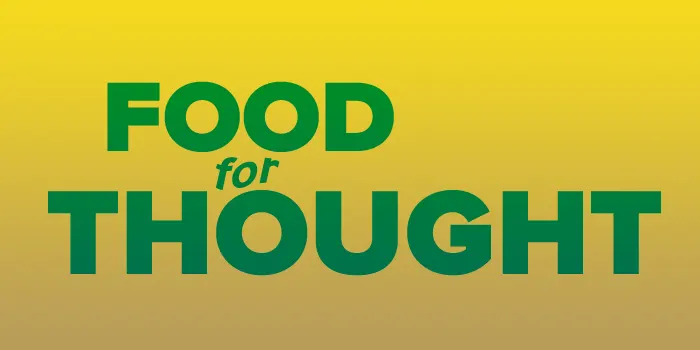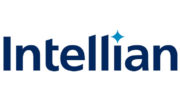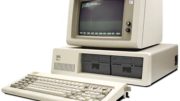What do your phone and washing machine have in common? More than you’d expect. Any device in your home with even the slightest bit of logic to it is probably developed using some sort of computer operating system. The days when you could connect physical switches to motors and lights are long gone. Today, everything in your modern life is governed by software. And that software almost always owes its existence to Unix, something you might not have even heard of.
A quick history of Unix
There are a lot of really long histories of Unix out there, and if you’re interested in them, you can search using Google, another system which is derived from Unix. So, I’ll just recap and hit the high points.
In the 1960s, AT&T was one of the most powerful tech companies in existence. They’d been researching automation for decades, as it became obvious that they’d never be able to hire enough telephone operators. They wanted computers to be robust, fail-safe, and easy to maintain. In this spirit, AT&T engineers laid out the foundation of what would later be called Unix. The name itself was a homophone of the word “eunuchs,” which is just more evidence that programmers of the day had an elementary-school sense of humor.
Unix would come to embody the very basics of what we call computer software design today. It was modular, meaning one part could be upgraded without upgrading the whole system. It was designed to work on different hardware, although it would take a decade for that to be possible. And, it was designed so one part of the system could fail and other parts could recover the one failed part. These were revolutionary ideas 60 years ago.
The twin controversies of Unix
Unix was developed and sold as a commercial product. Because it became possible to run it on different computers, it became one of the first retail pieces of software. Still, this raised the very question of what sort of computer software is actually copyrightable. Here were the two prevailing thought processes at the time:
You can copyright a book so you should be able to copyright a program.
This argument will tell you that software is written by humans, and humans also write things like books and music. So, in that sense, software is a literary work and literary works can be protected by copyright. It’s generally said that our American society would crumble if companies didn’t have the right to profit from the things they create. In this spirit, the makers and owners of the Unix system sought for years to protect its source code from being duplicated and illegally modified.
You can’t copyright a language or anything in the public parlance.
This argument says that there are things that are so universal and so common that it’s largely impossible to copyright them. No one can copyright English. It’s always evolving and it’s in common use. Computers have languages, too, and while these were originally very simple, they have become as complex as any spoken language.
As early as the 1980s, engineers argued that they should have the right to create systems that were so much like Unix that you couldn’t tell the difference. The term reverse-engineering was created which implied that if you could create a program that mimics another one without ever seeing the original source code, then you had the right to do it.
You might have some idea who won
After a number of legal skirmishes, the idea of reverse-engineering was upheld in court and this led to a number of pieces of software that act essentially like Unix but are not Unix. You’re probably somewhat familiar with two of them.
If you dig deep enough into the terms and conditions of practically any piece of software (not that anyone does) you’ll find the term “GNU General Public License.” GNU was a project back in the 1980s to develop a form of Unix that anyone could use if they followed a few rules. While GNU itself never amounted to much, the rules it created are still with us, and that’s what the General Public License is.
The other software you’ve undoubtedly heard of is Linux. Linux was developed as an academic exercise by Linus Torvalds and has become the predominant operating system in the world for everything from web servers to calculators. It’s also either inspired or led directly to every computing device you use today.
The legacy of Unix
Unix itself is still out there. The name is protected and the source code is very proprietary. As a result, it’s long since been left in the dust by Linux, Linux variants, and Linux-like operating systems. It’s a historical footnote today. But take a look at just a few things that owe a lot of their operation to Unix.
- DIRECTV and DISH DVRs use Linux and the GNU General Public License.
- Android is derived directly from Linux, and so is Google TV.
- Every Apple product is based on the Mach kernel and software from other first-generation open source Unix-like operating systems.
- The popular program Apache, which runs a huge percentage of web sites, is a core part of most Unix-like operating systems, including Linux.
- Linux is part of the operating system for Tesla automobiles and other manufacturers use it as well.
It’s a pretty comprehensive list. Experienced “whatabouters” might point out that Microsoft Windows is not part of that list. Yeah, but it sort of is. While Windows itself isn’t considered Unix-like, it uses core ideas from the development of Unix. There are also tons of other apps that run on top of Windows that are either developed or refined on Unix-like systems. No, Windows isn’t Unix. But without Unix, there’d be no Windows.
Food for thought
What if some major vulnerability in Unix were to be discovered? What if that vulnerability were such a key part of the Unix system architecture that it couldn’t be fixed or removed without a global effort? Imagine the chaos that would ensue. It would make the Y2K bug look like a child’s toy.
Even more interestingly, although unlikely, will Unix’s humble origins come back and destroy us in the age of AI? That idea has been mined in science fiction for fifty years. Famously, Star Trek: The Motion Picture posited the idea that a platform built on simple software could become self-aware, misinterpret its original directives, and threaten life on Earth. Not long ago I’d have called that unlikely. These day, with the rapid evolution of AI, I’m not so sure. Let’s hope that some of that legendary low humor that started the Unix project doesn’t come back to kill us. Because maybe, I hate to say it, it will.





